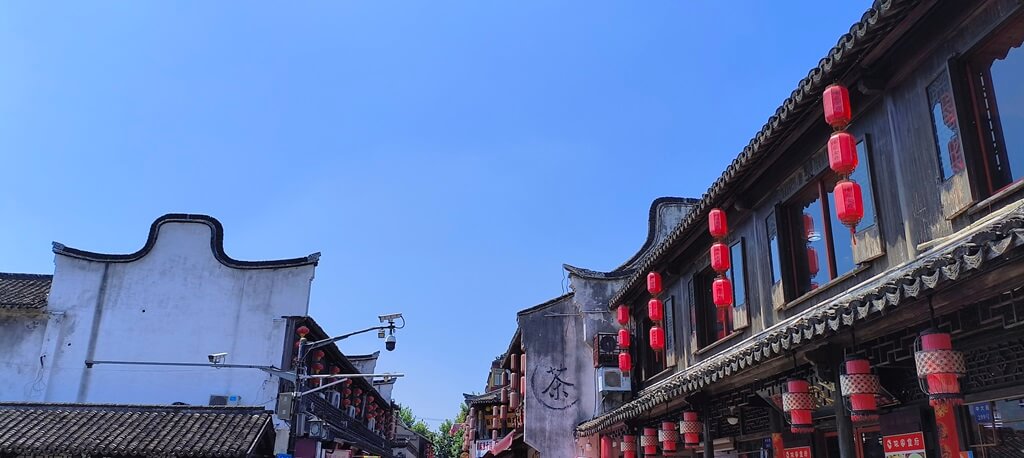Beijing, September 11, 2024 – Tesla’s highly anticipated Full Self-Driving (FSD) technology is set to make its debut in China, marking the beginning of a fierce competition in the autonomous driving sector. The announcement came as Tesla’s official AI account revealed plans to roll out FSD in China and Europe during the first quarter of next year, pending regulatory approval.
The news sent Tesla’s stock soaring by nearly 5% on the same day, although the stock subsequently plummeted by 8.45% due to a broader sell-off in U.S. tech stocks. In response, shares of Chinese companies involved in intelligent driving technology have seen a strong uptrend.
Tesla’s FSD V12 Beta, originally scheduled for release last year, began updates for a select few clients in January this year. The system, which operates on an end-to-end autonomous driving approach, differs from the laser radar route adopted by most domestic companies. Instead, Tesla uses neural networks for vehicle control, providing a decision-making experience with human-like intelligence, optimizing vehicle speed and steering.
Before the update in the release schedule, CEO Elon Musk had previously indicated that FSD would soon enter China. In July’s second-quarter earnings call, Musk reiterated that FSD would be rolled out in China, Europe, and other countries, with regulatory approval expected by the end of 2024.
The progress of FSD’s international expansion highlights the challenges of bringing autonomous driving technology out of its birthplace. Despite Musk’s high level of cooperation in areas such as data security and user privacy, Chinese authorities have expressed recognition of his sincerity. After his visit to China in April, the China Association of Automobile Manufacturers issued a document granting Tesla a green light in terms of vehicle data security. However, Tesla has yet to provide a definitive timeline for the actual deployment of FSD.
Delays in Tesla’s projects are not uncommon, especially in the realm of autonomous driving technology. The company had planned to release the Cybercab Robotaxi on August 8 this year but postponed the launch to October due to design changes. Tesla claims that the project team needs more time to build additional vehicle prototypes, while Musk attributed the delay to important design changes required for the Robotaxi’s front end.
The Cybercab represents a significant step towards the commercialization of Tesla’s autonomous driving technology. Musk first conceived of the idea in 2016. The production process for the Cybercab is said to be modular, akin to assembling a set of building blocks. Its business model is expected to be similar to Uber, offering autonomous driving services through a mobile application.
For Tesla, the urgency to launch autonomous driving services is palpable. According to data released by the China Association of Automobile Manufacturers on September 9, Tesla’s retail market share in China stood at 6.2% in August, down 2.8% from the previous month. Its market share is being rapidly eroded by rapidly emerging domestic new energy vehicle brands.
Tesla’s second-quarter financial report released at the end of July showed that its total revenue grew by 2.3%, with core automotive business revenue falling by 7% and net profit declining by 45%. Revenue growth came from the sale of carbon credits, energy generation and storage business, and after-sales car insurance services.
With the main business struggling, the yet-to-be-matured autonomous driving technology has become a key factor in maintaining market confidence. Deutsche Bank, which had long been bearish on Tesla’s stock, recently restored its buy rating and listed it as the top pick in the automotive sector. Analysts believe that although Tesla’s delivery volume and profit margins have decreased in the short term, this is only a temporary situation. In the long run, its autonomous driving technology and humanoid robot business have significant potential to win premium valuation for its stock.
However, when and how much of this potential can be realized remains unknown. For the Chinese market, Tesla’s presence itself has value – activating competition in related domestic industries and promoting their development. This value has been fully demonstrated in the new energy vehicle sector over the past few years.
Guotai Junan’s recent research report shows that under the catalytic effect of Tesla’s FSD entering China, the industrialization of the domestic intelligent driving industry will be accelerated again, driving the development of domestic intelligent driving整车 manufacturers and the supply chain.
The best route for autonomous driving technology has yet to be reached on a global scale. Musk has said that to achieve maturity in terms of safety and reliability, Tesla’s autonomous driving technology needs to accumulate approximately 60 billion miles of driving. As of the first quarter of this year, the total driving mileage of the FSD Beta version in real-world conditions has reached 1.25 billion miles.
Due to the different road conditions and traffic regulations in various countries and regions, the data accumulation after the deployment of FSD in China is particularly important. Tesla currently has about 1.7 million vehicles in the Chinese market, and their acceptance and actual application of FSD will determine the time needed for the technology to mature and land in the Chinese market. In this regard, Chinese autonomous driving technology companies have accumulated a first-mover advantage through leapfrogging.
For example, Baidu’s popular autonomous driving service platform Luobo Kaidu has provided more than 7 million service orders to the public as of the end of July this year. According to Baidu’s second-quarter financial report, the number of orders in the quarter increased by 26%. During the service process, it has also achieved the accumulation of actual operation mileage and user service experience.
In terms of data and decision-making on the road to autonomous driving technology, the Chinese government’s regulatory control is relatively strict and strong, especially for this foreigner. As it continuously creates new imagination spaces and completes Musk’s vision, it needs to play the role of a controllable catfish in the Chinese market.
Views: 0
